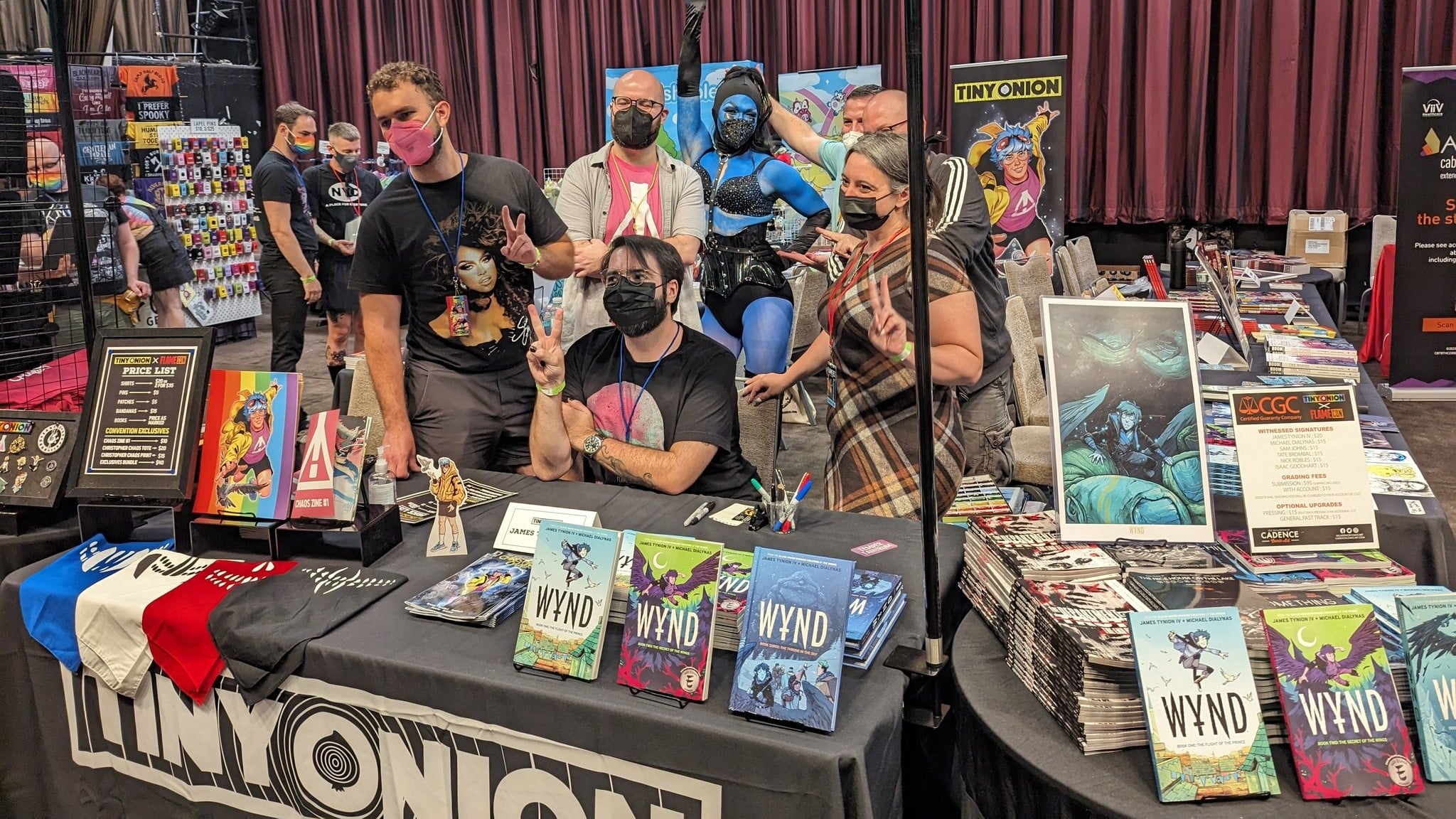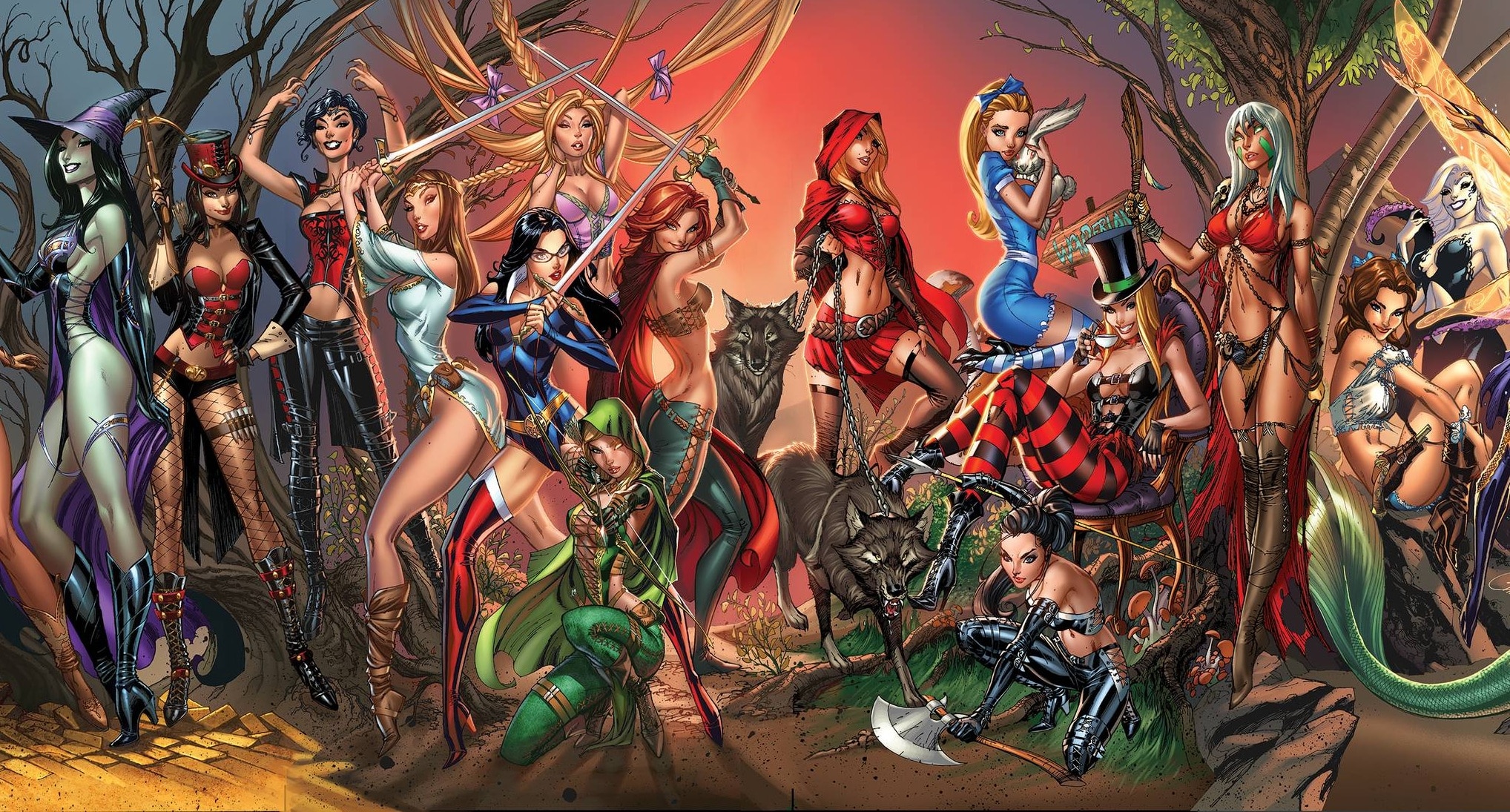
As I write this, it’s June 30, the final day of LGBTQ Pride Month (and the eve of Wrath Month). And by a nice coincidence, it’s time for another Kickstarter spotlight.
“Glitter Vipers,” from writer Joe Glass (“The Pride”), artist Kate Fleming, colorist Kelly Fitzpatrick, letterer Lucas Gattoni, editor Ted Brandt (“Crowded”) and cover artist James Gifford, takes the grindhouse revenge story and adds a queer twist, as a gang of LGBTQ+ characters reacts to a hate crime by taking to the streets to exact some long overdue vengeance. I talked to writer Joe Glass about the project.
Tell us a little about what “Glitter Vipers” is.

“Glitter Vipers” is all about a drag queen named Bi Phallicia and her friends, including trans kid Alby Prince, mechanic Mel, older gay Cal and others, who get caught in a nasty hate crime attack. They form a support group to deal with their feelings, but find that one of the biggest feelings they all share is anger at what happened to them. They decide to utilise that anger and form a street gang to fight back and protect the Manchester Gay Village from any future attacks. In doing so, they discover a hidden conspiracy behind it all.
Or, to make it simpler, it’s about a glitter, punky super queer street gang smashing bigots in the face with a sequin-covered baseball bat!
How did you get your creative team together?
Well, to be honest, it was all just a case of seeing who was available and liked the idea of the story, etc. The main thing I did know was for this book I wanted to have an all queer creative team as it was a very queer-focused book, and as it was smaller and more self-contained than my other work like “The Pride,” it was easier to make sure that happened. So I looked around for some of the best LGBTQ+ comic creators and folks I wanted to work with, and put out a call on Twitter, and by the end, I got the super awesome people I’m working with. As for Ted [Brandt, the editor], he was offering his services and I had never worked with an editor, and this story felt too important to not have someone who could make sure I made this as good as possible, so I had to work with him, too.

You’re telling a story about people fighting against bigotry and hate at a time when, at least here in the States, our history of hate is being dragged into the light and we are being shown that history is still very much present. Does this make it feel more timely to be telling this story now?
Here’s the thing (And whenever I say that, it reminds me of my friends in New Jersey): At the time I wrote the story, it was a reaction to news stories about a rise in hate crimes after various conservative wins around the world, etc. but not really dealing with anything else. The huge problems that we are addressing now and the (hopefully) sweeping societal change, was not on my mind for this project. We initially intended to launch in March/April, but then the lockdown (due to COVID-19) happened, and then the next idea was to launch at the start of June (Pride Month), and then the Black Lives Matter protests after the heartless murder of George Floyd started, so out of respect, we pushed back. And yet, it is arguably the case that the theme that “Glitter Vipers” deals with mirrors the things going on in the world today.
Granted, the focus is more towards the hardships of the LGBTQ+ community, but it is still very much about systemic and institutional violence aimed against minorities. As such, I think yeah, it has become a very timely project – not by intention, but by the sheer case of the desire to move ourselves into a better world.
The character of Bri struck me as absolutely fascinating, because the idea of inserting a pacifist into a revenge story seems antithetical. What was important about having this point of view?
Indeed, between her and Queenie, our other pacifist character, it felt important to show these other ways of dealing with the anger of survivors and victims of the systems that work against us. These characters are still angry; how could they not be? But they use that anger to fuel their help in different ways, and I think that’s something we can see in the various protests we’ve seen around the world of late. There are people who will be right up there in it, and there’s those who stand back and organise or support, and so it was important for me to show that people can be less visible but still fighting for the community as much as anything else.

The revenge genre has a problematic history, especially in its origins in the ’70s with the often lurid and leering camera angles. What do you see about the genre that makes it something you wanted to work in and … reclaim? Claim as your own? Show it can be more than “Last House on the Left” and “Death Wish”?
These revenge fantasies ultimately come down to one thing: wish fulfilment. And ultimately, so many comics are about that – superhero stories are just wish fulfilment power fantasies. And this is kind of the same. Ultimately, the idea spawned from reading news stories about homophobic attacks on the community, which are very much still a problem, and feeling so angry that I wanted to be able to fight back. To have the perpetrators before me and respond in the most immediate thought as it comes. And that became connected to the grindhouse genre for me.
However, I then wanted to look at approaching that in a 21st century manner, and explore how those ideas of revenge, anger and violence can be justified, how those natural feelings can be human, and are they healing? So while this is a fun, punky revenge grindhouse action story, it is hopefully also one that will make you think.
You’ve had several successful Kickstarters before this. What advice would you give to creators looking to do their first?
The biggest advice is to make something self-contained, especially if it’s your first time Kickstartering. Building an audience on the platform is hard at the best of times, but if it’s also to make just part of a complete work, it can be harder. So create something that is the whole story in one. Similarly, I generally think about making your product as much of an artifact as possible. Don’t think about the relative disposability of individual pamphlet comics, think about making something special and unique. Complete books always seem to do better than anything else.
“Glitter Vipers” is currently up on Kickstarter and is roughly $1,500 from its $9,989 funding goal. You can check it out and back it here.
Matt Lazorwitz read his first comic at the age of 5. It was Who's Who in the DC Universe #2, featuring characters whose names begin with B, which explains so much about his Batman obsession. He writes about comics he loves, and co-hosts the podcasts BatChat with Matt & Will and The ComicsXF Interview Podcast.






